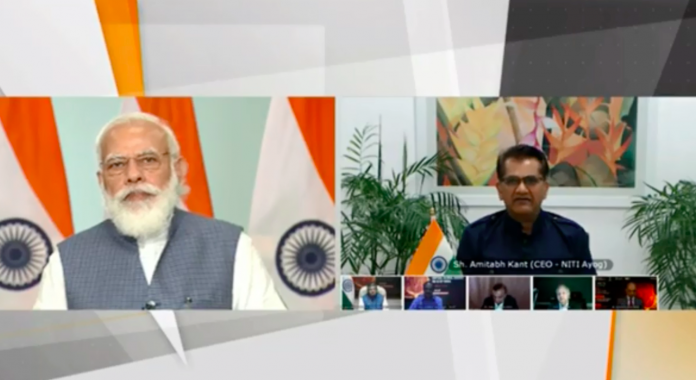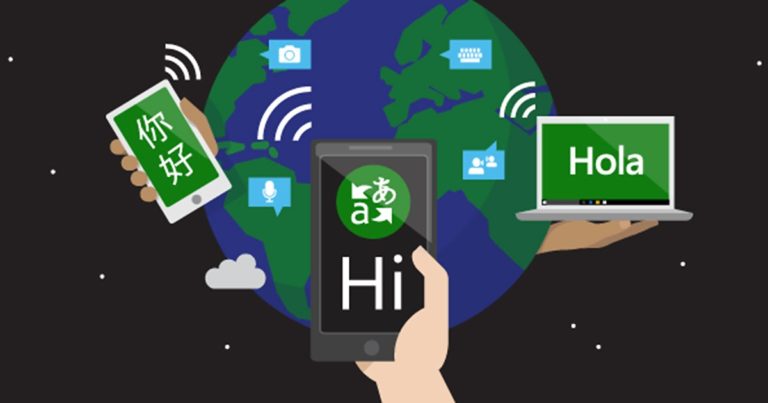“Our planet is blessed with several languages. In India, we have several languages and dialects; such diversity makes us a better society. As professor Raj Reddy suggested, why not use AI to seamlessly breach the language barrier?” said PM Modi during his speech on the opening of the Responsible AI for Social Empowerment (RAISE), 2020 summit.
It may be noted that the same sentiment was echoed by the National e-Governance Division (NeGD) and MyGov CEO Abhishek Singh, who said that Meity would be soon approaching the cabinet to introduce AI-based programmes for overcoming language barriers, just recently. So can AI really transform or rather break the linguistic barrier?
Translation As a Service Against Language Barriers
AI can definitely be used as an effective tool for pulling down language barriers and also further preservation of endangered ones. There have been several efforts in the past which pave the way for future experimentation.
The first most prominent attempt at machine translation was made back in the 1950s by IBM. However, the first translation tool that was available to the public was in the 1990s through Altavista’s Babel Fish. Next came the use of statistical machine translation (SMT), a model which compares words and phrases to their previous translations to pick the most frequently used wording. Soon after, machine learning and AI began to be applied to translation technologies.
One of the most prominent techniques that is being used right now is Google’s neural machine translation (NMT) which focuses on the whole sentence in their most naturally used form rather than seeing words or phrases in isolation. Together with AI, NMT is able to learn from other complete translations by analysing the structure while also picking up on the subtleties and nuances.
In the increasingly globalised world, language is one major barrier to seamless trade. While there are of course several traditional translation tools available, however, they lack nuance due to which several intricacies of communication are omitted. AI-enabled smart translators can distinguish between different accents, dialects, and semantics. The result of this is that communication becomes more engaging and descriptive, naturally leading to a higher trust value between the two parties. In 2014, e-commerce website eBay incorporated an AI-powered translation tool as part of their global sales team. It was found that the sales of the eCommerce platform improved by 11% after this adopting AI translation tools. Further, by using AI translation in personalisation, insights, and recommendations, the order processing time was found to be greatly reduced.
AI translation uses several hundred bilingual dictionaries to translate from one language to another and then links the two sentences structures. In case of discrepancies, AI uses the statistical probability of accuracy to make a choice.
Possible Challenges
AI conventionally excels at tasks which are rooted in objectivity, working best when confronted with clear mathematical rules that govern decision making. Linguistics is more subjective. Humans don’t communicate by using isolating words; instead, they are paired with other words that affect the meaning, context, sentence construction, and tone. Further, the use of varying tone, metaphor, satire, and other linguistic characteristics cannot be defined by rules or cannot be learnt from dictionaries.
Although, as discussed, Google’s NMT is designed to consider sentences in their entirety, it is still not enough. Experts believe that the way meaning of a word is dependent on the sentence, the sentence’s meaning is dependent on the rest of the paragraph and further the entire text which in turn relies on larger context such as culture and intent. Even if it works with a more straight-jacket corporate writing and speech, AI translation tools may not be as efficient for literary pieces.
Other minor challenges include making the AI translation process more inclusive. Currently, one of the most advanced AI tools, Google’s NMT model can process just 103 languages, a very small part of the thousands of languages of the world. Further, as more languages are added to such AI tools, vocabulary handling becomes a major challenge.




















































































